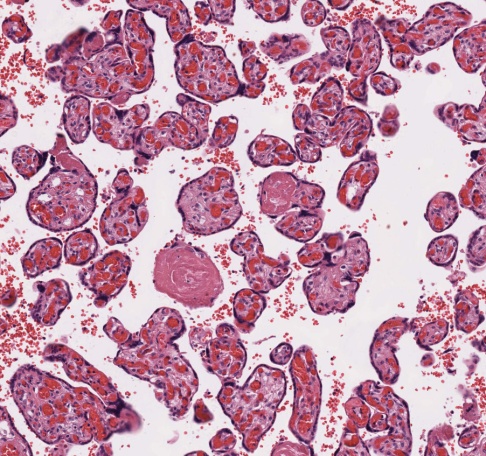
An extension of the study on respiration addresses oxygen transport in the human placenta. This organ in the only exchange interface between the mother and the fetus. It is in charge of providing oxygen and nutrients to the fetus, and expelling carbon dioxide and waste. Proper working of the placenta is essential for the good development of the fetus,fun while placental pathologies can induce fetal dysfunctions and even fetal death. The efficiency of placenta function is determined by its very irregular geometrical structure. The aim of this study is to develop a mathematical model of respiratory gas exchange inside the human placenta, in order to reach a better understanding of the relation between structure and function in this organ.
A few significant publications:
- A. S. Serov, C. Salafia, D. S. Grebenkov, M. Filoche, The Role of Morphology in Mathematical Models of Placental Gas Exchange (accepted to J. Appl. Physiol.)
- . A. Serov, C. Salafia, P. Brownbill, D. S. Grebenkov, and M. Filoche, Optimal villous density for maximal oxygen uptake in the human placenta, J. Theor. Biol. 364, 383-396 (2015).
- A. S. Serov, C. Salafia, M. Filoche, and D. S. Grebenkov, Analytical theory of oxygen transfer in the human placenta, J. Theor. Biol. 368, 133-144 (2015)
- J. S. Gill, C. M. Salafia, D. S. Grebenkov, D. D. Vvedensky, Modelling oxygen transport in human terminal villi, J. Theor. Biol. 291, 33-41 (2011).

